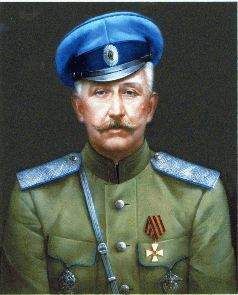30. Pratkanis, A.R. (1988). The attitude heuristic and selective fact identification. British Journal of Social Psychology, 27, 257-263.
31. Thistlewaite, D. (1950). Attitude and structure as factors in the distortion of reasoning. Journal of Abnormal and Social Psychology, 45, 442-458.
32. Ross, L., Greene, D., amp; House, P. (1977). The ‹false-consensus› effect: An egocentric bias in social perception and attribution process. Journal of Experimental Soda! Psychology, 13,279-301.
33. Pratkanis, Cognitive representation.
34. О лабораторной демонстрации - см.: Gilovich, Т. (1981). Seeing the past in the present: The effect of associations to familiar judgments and decisions. Journal of Personality and Social Psychology, 40, 797-808.
35. Darley, J.M., amp; Gross, P.ff. (1983). A hypothesis-confirming bias in labeling effects. Journal of Personality and Social Psychology, 44, 20-33.
36. Hamilton, D.L., amp; Ross, T.L. (1980). Illusory correlation and the maintenance ofstereotypic beliefs. Journal of Personality and Social Psychology, 39, 832-845.
37. Pratkanis, A.R. Личное сообщение.
38. Chapman, L.J. (1967). Illusory correlation in observational report. Journal of Verbal Learning and Verbal Behavior, 6, 151-155. Chapman, L.J., amp; Chapman, J.P. (1967). Genesis of popular but erroneous psychodiagnostic observations. Journal of Abnormal Psychology, 72, 193-204. Chapman, L.J., amp; Chapman, J.P. (1969). Illusory correlation as an obstacle to the use of valid psychodiagnostic signs. Journal of Abnormal Psychology, 74,271-280.
39. Park, В., amp; Rothbart, M. (1982). Perception of out-group homogeneity and levels of social categorization: Memory for the subordinate attributes of in-group and out-group members. Journal of Personality and Social Psychology, 42, 1051-1068.
40. Обзоры и дискуссию - см.: Tajfel, Н. (1981). Human groups and social categories. Cambridge: Cambridge University Press. Turner, J.C. (1987), Rediscovering the social group. New York: Basil Blackwell.
41. Loflus, E.F., amp; Loftus, G.R. (1980). On the permanence of stored information in the human brain. American Psychologist, 35, 409-420.
42. Loftus, E.F., amp; Ketchum, К. (1991). Witness forthe defense. New York: St.Martin's Press.
43. Loftus, E.F., amp; Palmer, J.C. (1974). Reconstruction ofautomobile destruction: An example of the interaction between language and memory. Journal of Verbal Learning and Verbal Behavior, 13, 585-589.
44. Loftus, E.F. (1977). Shifting human color memory. Memory and Cognition, 5, 696-699.
45. Loftus, E.F. (1993). The reality of repressed memories. American Psychologist, 48, 518-537.
46. Ross, M., McFarland, С., amp; Fletcher, G.O.J. (1981). The effect of attitude on the recall of personal history. Journal of Personality and Social Psychology, 40, 627-634.
47. Gibbs, G. (1981). Teaching students to learn. Milton Keynes, England: Open University Press.
48. Pratkanis, A.R., Eskenaw, J., amp; Greenwald, A. G. (1990). What you expect is what you believe (but not necessarily what you get): On the effectiveness of subliminal self-help audiotapes.Unpublished manuscript.University of Santa Cruz. Greenwald, A.G., Spangenberg, E.R., Pratkanis, A.R., amp; Eskena^i, J. (1991). Double-blind tests of subliminal self-help audiotapes. Psychological Science, 12, 119-122.
49. Conway, M., amp; Ross, M. (1984). Getting what you want by revising what you had. JoumalofPersonality andSocial Psychology, 47, 738-748.
50. Wyatt, D.F., amp; Campbell, D. T. (1951). On the liability of stereotype or hypothesis. Journal of Abnormal and Social Psychology, 46, 496-500. Bruner, J.S., amp; Potter, M.C. (1964). Science, 144, 424-425.
51. Snyder, M., amp; Swann, W.B. (1978). Hypothesis-testing processes in social interaction. Journal of Personality and Social Psychology, 36, 1202-1212.
52. Fischhoff, В. (1975). Hindsight does not equal foresight: The effect of outcome knowledge on judgment under uncertainty. Journal of Experimental Psychology: Human Perception and Performance, 1, 288-299. Fischhoff, В. (1977). Perceived informativeness offacts. Journal of Experimental Psychology: Human Perception and Performance, 3,349-358.
53. Greenwald, A.G. (1980). The totalitarian ego: Fabrication and revision of personal history. American Psychologist, 35, 603-618.
54. LaPier, R. (1934). Attitudes versus actions. Social Forces, 13, 230-237.
55. Wicker, A. (1969). Attitudes versus actions: The relationship of verbal and overt behavioral responses to attitude objects. Journal of Social Issues, 25 (4), 41-78.
56. Jones, E.E. (1990). Interpersonal perception. New York: W.H. Freeman. Jones, E.E., amp; Davis, K.E. (1965). From acts to dispositions: The attribution process in person perception. In L. Berkowitz (Ed.), Advances in Experimental Social Psychology (Vol. 2, pp. 219-266). New York: Academic Press.
57. Jones, E.E., amp; Harris, V.A. (1967). The attribution of attitudes. Journal of Experimental Social Psychology, 3, 1-24.
58. Favo, R.H. (1986). How do attitudes guide behavior? In R.M. Sorrentino amp; E.T. Higgins (Eds.), Handbook of motivation and cognition (pp. 204-242). New York: Guilford Press. Fa^io, R.H. (1989). On the power and functionality of attitudes: The role of attitude accessibility. In A.R. Pratkanis, S.J. Breckler, amp;A.G. Greenwald (Eds.), Attitude structure and function (pp. 153-179). Hilisdale, NJ: Eribaum.
59. Fazio, R.H., amp; Williams, C.J. (1986). Attitude accessibility as a moderator of the attitude-perception and attitude-behavior relations: An investigation of the 1984 presidential elections. JoumalofPersonality and Social Psychology, 51, 505-514.
60. Fazio, R.H., Chen, J., McDonel, E.G., amp; Sherman, S.J. (1982). Attitude accessibility, attitude-behavior consistency, and the strength of the object-evaluation association. Journal of Experimental Social Psychology, 50, 339-357. Fa^io, R.H., Powell, M.C., amp; 456 Herr, P.M. (1983). Toward a process model of attitude-behavior relation: Accesing one's attitude upon mere observation of the attitude object. Journal of Personality and Social Psychology, 44, 723-735. Favo, R.H., amp; Zanna, M. P. (1981). Direct experience and attitude-behavior consistency. In L. Berkowitz (Ed.), Advances in Experimental Social Psychology (Vol. 14, pp. 162-202). New York: Academic Press. Regan, D.T., amp; Fa^io, R.H. (1977). On the consistency between attitudes and behavior: Look to the method of attitude formation. Journal of Experimental Social Psychology, 13,38-45.
61. Herr, P.M. (1986). Consequences of priming: Judgment and behavior. Journal of Personality and Social Psychology, 51, 1106-1115.
62. Ross, L. (1977). The intuitive psychologist and his shortcomings: Distortion in the attribution process. In L. Berkowitz (Ed.), Advances in Experimental Social Psychology (Vol. 10, pp. 173-220). New York: Academic Press.
63. Bierbrauer, G. (1973). Effect of set, perspective, and temporal factors in attribution. Unpublished Ph.D. dissertation, Stanford University. Цит. по: Ross (1977).
64. Ross, L., Amabile, T.M., amp; Steinmet^, J.L. (1977). Social roles, social control, and biases in social-perception processes. Journal of Personality and Social Psychology, 35, 485-494.
65. Ответы: стадион ‹Форбс› в Питтсбурге, Вильнюс и 4 июля 1826 года.
66. Jones, Е.Е., amp; Nisbett, R.E. (1971). The actor and the observer: Divergent perceptions of the causes of behavior. In Е.Е. Jones, D.E. Kanouse, H.H. Kelley, R.E. Nisbett, S. Valins, amp; B. Weiner (Eds.), Attribution: Perceiving the causes of behavior (pp. 79-94). Morristown, NJ: General Learning Press.
67. CM: Jones, Е.Е., Rock, L., Shaver, K.G., Goethals, G. R., amp; Ward, L.M. (1968). Pattern of performance and ability attribution: An unexpected primacy effect. Journal of Personality and Social Psychology, 10, 317-349. McArthur, L. (1972). The how and what of why: Some determinants and consequences of causal attribution. Journal of Personality and Social Psychology, 22, 171-193. Nisbett, R.E., Caputo, C., Legant, P., amp; Marecek, J. (1973). Behavior as seen by the actor and as seen by the observer. Journal of Personality and Social Psychology, 27, 154-164.
68. Storms, M.D. (1973). Videotape and the attribution process: Reversing the perspective of actors and observers. Journal of Personality and Social Psychology, 27, 165-175.
69. James, W. (1890/1950). The principles of psychology (pp. 314-315). New York: Dover.
70. Greenwald, A.G. (1980). The totalitarian ego: Fabrication and revision of personal history. American Psychologist, 35, 603-618. Greenwald, A.G., amp; Pratkanis, A.R. (1984). The self. In R.S. Wyer amp; Т.К. Srull (Eds.), Handbook of Social Cognition (Vol. 3, pp. 129-178). Hilisdale, NJ: Eribaum.
71. Greenwald, The totalitarian ego.
72. Jervis, R. (1976). Perception and misperception in international politics. Princeton, NJ: Princeton University.
73. Longer, E.J. (1975). The illusion of control. Journal of Personality and Social Psychology, 32, 311-329. Longer, E.J. (1977). The psychology of chance. Journal of the Theory of Social Behavior, 7, 185-208.
74. Petty, R.E., amp; Brock, T.C. (1979). Effects of‹Bamum› personality assessments on cognitive behavior. Journal of Consulting and Clinical Psychology, 47, 201-203.
75. Markus, Н. (1977). Self-schemata and processing information about the self. Journal of Personality and Social Psychology, 35, 63-78. Breckler, S.J., Pratkanis, A.R., amp; McCann, D. (1991). The representation of self in multidimensional cognitive space. British Journal of Social Psychology, 30, 97-112. Brenner, M. (1973). The next-in-line effect. Journal of Verbal Learning and Verbal Behavior, 12, 320-323. Slamecka, N.J., amp; Graf, P. (1978). The generation effect: Delineation of a phenomenon. Journal of Experimental Psychology: Human Learning and Memory,4, 592-604. Rogers, Т. B.,Kuiper, N.A., amp; Kirker, W.S. (1977). Self-reference and the encoding of personal information. Journal of Personality and Social Psychology, 35, 677-688. Klein, S.B., amp; Loftus, J. (1988). The nature ofself-referent encoding: The contributions ofelaborative and organizational processes. Journal of Personality and Social Psychology, 55, 5-11.
76. San Francisco Sunday Examiner and Chronicle, April 22, 1979, p. 35.
77. Greenberg, J., Pysy^ynski, Т., amp; Solomon, S. (1982). The self-serving attributional bias: Beyond self-presentation. Journal of Experimental Social Psychology, 18, 56-67. Arkin, P.M., amp; Maruyama, G.M. (1979). Attribution, affect, and college exam performance. Journal of Educational Psychology, 71, 85-93. Gilovich, Т. (1983). Biased evaluation and persistence in gambling. Journal of Personality and Social Psychology, ^,1110-1126. Ross, M., amp; Sicoly, F. (1979). Egocentric biases in availability and attribution. Journal of Personality and Social Psychology, 37, 322-336. Breckler, S.J., Pratkanis, A.R., amp; McCann, D. (1991). The representation of self in multidimensional cognitive space. British Journal of Social Psychology, 30, 97-112. Johnston, W.A. (1967). Individual performance and self-evaluation in a simulated team. Organizational Behavior and Human Performance, 2, 309-328. Cunningham, J.D., Starr, P.A., amp; Kanouse, D.E. (1979). Self as actor, active observer, and passive observer: Implications for causal attribution. Journal of Personality and Social Psychology, 37, 1146-1152.
78. Greenwald, A.G., amp; Bleckler, S.J. (1985). To whom is the self presented? In B.R. Schlenker (Ed.), The self and social life (pp. 126-145). New York: McGraw-Hill.
79. Miller, D.T., amp; Ross, M. (1975). Self-serving biases in the attribution of causality: Fact or fiction? Psychological Bulletin, 82, 213-225.
80. Weary (Bradley), G. (1978). Self-serving biases in the attribution process: A reexamination of the fact or fiction question. Journal of Personality and Social Psychology, 36, 56-71. Weary, G. (1980). Examination of affect and egotism as mediators of bias in causal attribution. Journal of Personality and Social Psychology, 38, 348-357. Weary, G" Harvey, J.H., Schwieger, P., Olson, C.T., Perloff, R., amp; Pritchard, S. (1982). Self-presentation and the moderation of self-serving attributional biases. Social Cognition, 1,140-159.
81. Alloy, L.B., amp; Abramson, L.Y. (1979). Judgement of contingency in depressed and nondepressed students: Sadder but wiser. Journal of Experimental Psychology: General, 108,441-485.
82. Grove, J.R., Hanrahan, S.J., amp; Mcinman, A. (1991). Success/failure bias in attribution across involvement categories in sport. Personality and Social Psychology Bulletin, 17,93-97.
83. Taylor, S.E. (1989). Positive illusions: Creative self-deception and the healthy mind. New York: Basic Books.
84. Seligman, M.E.P. (1991). Learned optimism. New York: Knopf. Рус. пер. - Зелигман M. Как научиться оптимизму. Советы на каждый день. M., 1997.
К главе 5 Самооправдание
1. Prasad, J. (1950). A comparative study of rumors and reports in earthquakes. British Journal of Psychology, 41, 129-144.
2. Sinha, D. (1952). Behavior in a catastrophic situation: A psychological study of reports and rumors. British Journal of Psychology, 43, 200-209.
3. Festinger, L. (1957). A theory of cognitive dissonance. Stanford: Stanford University Press.
4. Kassarjian, H., amp; Cohen, J. (1965). Cognitive dissonance and consumer behavior. California Management Review, 8, 55-64.



